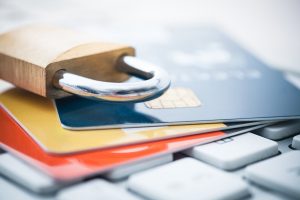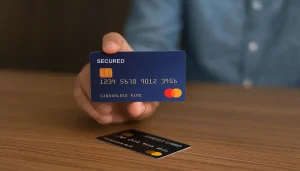Let your fingers do the clicking, and you can have everything from a new outfit to groceries delivered without ever leaving the couch. It sounds convenient, and it is. Just keep in mind that hackers are waiting to grab your personal information and send themselves a nice new gift, too.
Anúncios
Fortunately, there are simple solutions you can use to protect yourself and keep your credit card details from getting stolen online. By implementing these practices, you can ensure a higher level of security while enjoying the convenience of online shopping.
Secure payments are crucial in today’s digital age. It is not just about convenience; it’s also about protecting yourself from online threats. With a few critical steps, you can make a substantial difference in how safe your credit card information remains when making purchases on the internet.
Limit Your Risk With One Account
Get Virtual Account Numbers
Another way to protect your credit card is by using virtual account numbers. Many credit card companies offer this feature, creating a temporary one-time card number for each online transaction.
These virtual numbers are linked to your real account but prevent your actual card information from being exposed during the checkout process. This extra layer of security can be extremely effective if hackers obtain your data later; they won’t have your real card number.
Virtual account numbers provide peace of mind, knowing that even if a malicious entity gets hold of your transaction details, they cannot use them for further purchases. This practice substantially reduces the risk associated with online transactions.
Create Unique Passwords
Passwords play a crucial role in securing your online card and banking profiles. General guidelines for effective passwords include making them long, containing both upper- and lower-case letters, including numbers, and using symbols where permitted. Complex and unique passwords make it much harder for hackers to access your accounts using the same login information.
Consider using a phrase or even an entire sentence for your passwords. Replacing words with numbers or symbols increases complexity. For example, instead of “to,” use “2,” and substitute “and” with “&.” However, avoid using personal information or easily guessable phrases to maintain security.
Memorable phrases can ensure you won’t forget your passwords. Ideally, avoid writing them down. This method ensures that even if someone gains access to one password, they won’t be able to breach multiple accounts.
Remember “S Is for Secure”
Use Known, Trusted Sites
One of the best ways to protect your credit card information is to shop with trusted, known retailers. If you’re unfamiliar with a site, take a few minutes to research its reputation. Check reviews and see if there are any red flags about security issues. Also, scrutinize the site’s design; if it appears unprofessional or off, it’s better to find your product elsewhere.
Reliable retailers invest in website security to protect their customers. Choosing such sites minimizes the risk of your information falling into the wrong hands. Furthermore, even seemingly legitimate but unknown sites can pose risks, so it’s always better to err on the side of caution.
Only Shop on Secure Networks
Public Wi-Fi networks are a common target for cybercriminals who intercept data transferred over these links. Therefore, avoid shopping online while connected to public Wi-Fi. Always use a secure, private network at home or via your mobile data connection for online purchases to minimize the risk of your financial information being intercepted.
Certain online practices can make your public network shopping somewhat safer, but they are never as secure as a private connection. Make use of Virtual Private Networks (VPNs) if you must use a public Wi-Fi network; they offer an added layer of protection by encrypting your data.
Avoiding public networks altogether when shopping online is a straightforward way to significantly enhance your security. Protecting your information starts with the connection you use.
Additional Tips to Secure Your Information
Use Security Software
Using reliable security software can make a significant difference in protecting your online transactions. Both desktop and mobile devices should be covered. With the increasing trend of shopping on small screens, mobile devices are often more vulnerable to attacks. Comprehensive Internet Security software provides anti-virus, anti-phishing, and additional layers of protection crucial for secure online shopping.
Such software offers protection by identifying and blocking malicious websites and software. It serves as the first line of defense against potential threats. Regular scans can detect and manage vulnerabilities you might otherwise be unaware of.
A small investment in good security software can provide invaluable peace of mind, making your online shopping experience safer and more enjoyable.
Update to Stay Safe
Software updates are more than just feature improvements; they often include critical security patches. Staying updated with your operating system, apps, and all other software ensures you have the latest defenses against evolving cyber threats.
When you receive a notification for an update, don’t ignore it. Promptly installing updates can close vulnerabilities that cybercrooks can exploit. It’s a small step but an essential one in keeping your online activities secure.
A proactive approach to updates can significantly lower your risk. Make it a regular habit to check for updates and ensure your devices are as secure as possible for online shopping.







